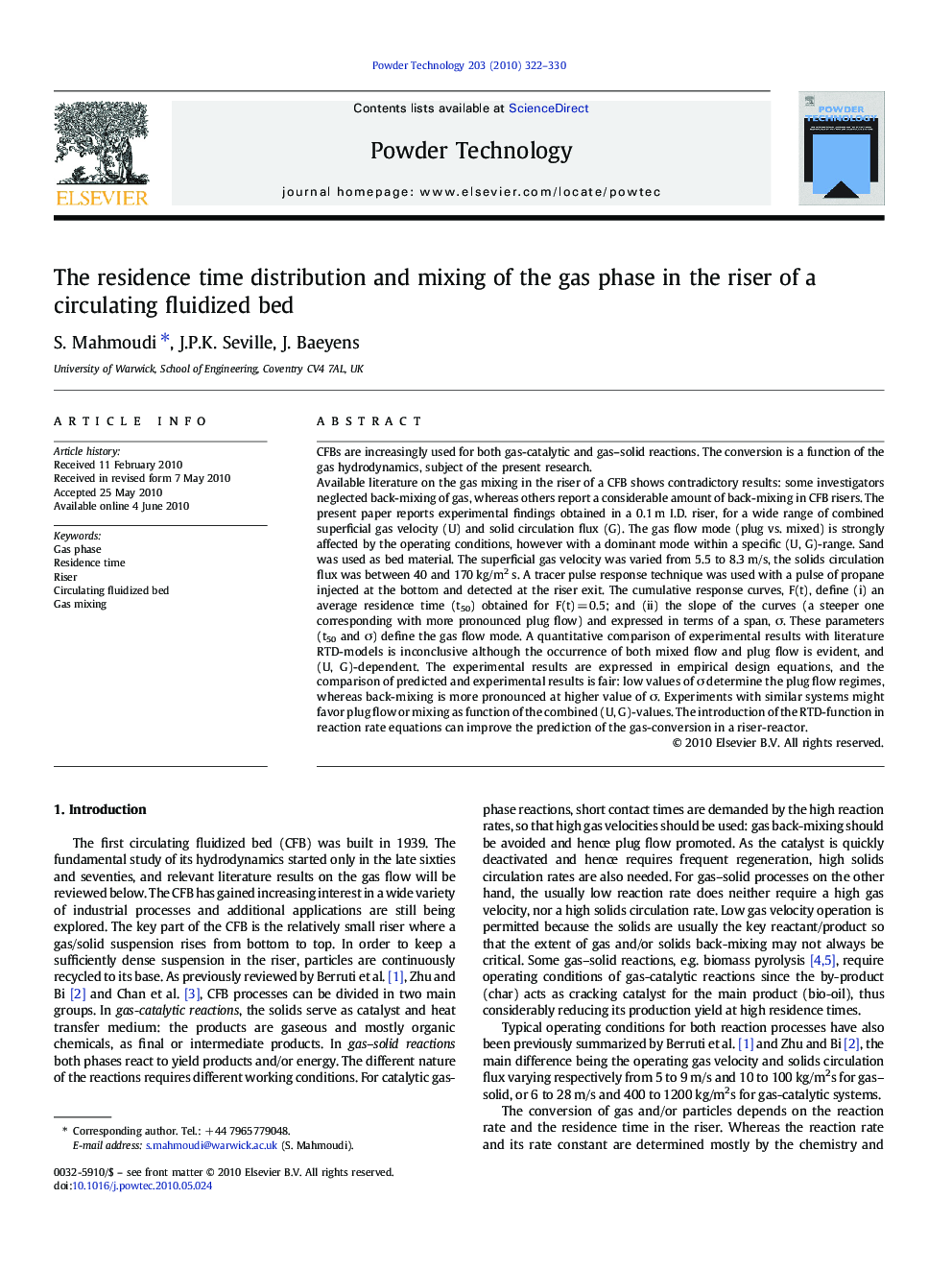| کد مقاله | کد نشریه | سال انتشار | مقاله انگلیسی | نسخه تمام متن |
|---|---|---|---|---|
| 237671 | 465718 | 2010 | 9 صفحه PDF | دانلود رایگان |

CFBs are increasingly used for both gas-catalytic and gas–solid reactions. The conversion is a function of the gas hydrodynamics, subject of the present research.Available literature on the gas mixing in the riser of a CFB shows contradictory results: some investigators neglected back-mixing of gas, whereas others report a considerable amount of back-mixing in CFB risers. The present paper reports experimental findings obtained in a 0.1 m I.D. riser, for a wide range of combined superficial gas velocity (U) and solid circulation flux (G). The gas flow mode (plug vs. mixed) is strongly affected by the operating conditions, however with a dominant mode within a specific (U, G)-range. Sand was used as bed material. The superficial gas velocity was varied from 5.5 to 8.3 m/s, the solids circulation flux was between 40 and 170 kg/m2 s. A tracer pulse response technique was used with a pulse of propane injected at the bottom and detected at the riser exit. The cumulative response curves, F(t), define (i) an average residence time (t50) obtained for F(t) = 0.5; and (ii) the slope of the curves (a steeper one corresponding with more pronounced plug flow) and expressed in terms of a span, σ. These parameters (t50 and σ) define the gas flow mode. A quantitative comparison of experimental results with literature RTD-models is inconclusive although the occurrence of both mixed flow and plug flow is evident, and (U, G)-dependent. The experimental results are expressed in empirical design equations, and the comparison of predicted and experimental results is fair: low values of σ determine the plug flow regimes, whereas back-mixing is more pronounced at higher value of σ. Experiments with similar systems might favor plug flow or mixing as function of the combined (U, G)-values. The introduction of the RTD-function in reaction rate equations can improve the prediction of the gas-conversion in a riser-reactor.
The gas flow in a CFB riser varies from plug flow in dilute or dense risers, to a more outspoken back-mixing in core annulus flow, as demonstrated by the measured gas residence time distribution. The tracer concentration profile (A) and the resulting RTD-curve (B) are illustrated at a gas velocity of 4.93 m/s and solids circulation flux of 34.1 kg/m²s.Figure optionsDownload as PowerPoint slide
Journal: Powder Technology - Volume 203, Issue 2, 10 November 2010, Pages 322–330